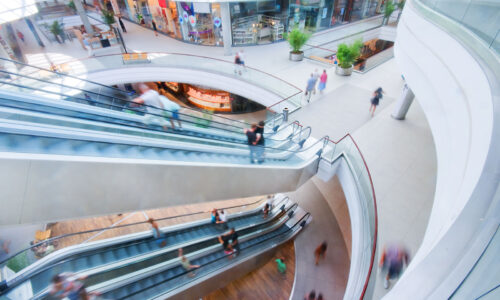In today's fast-paced shopping environment, the aesthetic and functional appeal of your store plays a key role in drawing in and keeping customers. As consumer preferences evolve and competition intensifies, retail refurbishment has emerged as a vital strategy for businesses aiming to breathe new life into their storefronts. Whether you're a well-established brand or a new entrepreneur, grasping what retail refurbishment is and why it is important to your store is crucial for remaining relevant in the industry.
Retail refurbishment is more than about making your space look new; it's about revitalizing your brand and enhancing the customer experience. A thoughtfully planned refurbishment can lead to increased foot traffic, improved sales, and a deeper connection with your customers. By investing in design and aesthetic enhancements, thoughtful layout changes, and sustainable practices, you can create an attractive atmosphere that appeals with your customers and meets with your business objectives. This article delves into the multifaceted world of retail refurbishment, providing insights on its benefits, key strategies, and the steps necessary to effectively transform your retail space.
Understanding Retail Renovation
Commercial renovation is the method of updating a retail area to enhance its appeal, efficiency, and client engagement. This upgrade can vary from slight updates, such as fresh coating and displays, to extensive renovations that alter the store's design and appearance. The goal of retail refurbishment is to create a retail atmosphere that resonates with customers, adapts with current trends, and boosts the overall corporate identity.
A key reason for undertaking a retail refurbishment is to renew a brand and increase sales. As consumer preferences shift, stores must adapt to meet the expectations of their desired clientele. Renovation allows stores to revive their selection, add new innovations, and create attractive areas that captivate and hold customers. When executed well, a renovated store can significantly boost foot traffic and influence buying choices.
Additionally, an impactful retail refurbishment goes above aesthetics; it is a calculated commitment in the brand’s prospect. Carefully crafted refurbishments take into account functional enhancements such as optimizing the configuration for increased flow and engagement. By thoughtfully considering design aspects, retailers can ensure that their refurbished environment not only is visually pleasing but also enhances the overall customer experience for customers, ultimately showcasing the store's missions and corporate identity.
The Benefits of a Store Renovation
A store renovation is an investment that offers significant benefits for your business. First and foremost, refurbishing your store can improve its visual appeal, drawing more shoppers and converting visitors into customers. A fresh look shows to customers that your brand is cutting-edge and current, which can elevate their interest and interaction with your products. This revitalization not only decorates the space but also creates an inviting atmosphere that encourages shoppers to spend more time in your store.
In addition to attracting more customers, a store redesign can also enhance the utility of your space. By reassessing your store's layout and setup, you can create a more productive flow that guides customers smoothly through the shopping experience. This considerate arrangement makes it easier for customers to locate what they need, which leading to higher sales. Beyond layout adjustments, incorporating intelligent design choices such as strategic lighting and modernized fixtures can showcase key products and promotions, further enhancing the shopping experience.

Finally, a successful retail renovation can greatly strengthen your brand identity. By aligning your store's aesthetics with your brand principles and goals, you create a cohesive experience that resonates with your target audience. Customers are more likely to come back to a store that reflects their tastes and values, encouraging brand loyalty. A successfully completed makeover not only rejuvenates the immediate environment but also reinforces customer relationships, boosting repeat business and solidifying a stronger market presence.
Arranging Your Retail Refurbishment
Effective preparation is crucial for a productive store refurbishment. Begin by evaluating your existing store design and recognizing areas that require upgrades. Consider client flow, product placement, and any design aspects that may feel outdated. Gathering feedback from staff and customers can offer important insights into what changes would improve their experience. Establish clear goals for the refurbishment; whether it's building a more welcoming atmosphere or integrating up-to-date technology, having set objectives will inform your decisions.
Subsequently, create a comprehensive timeline and financial plan for the refurbishment project. click reference associated with structural changes, materials, labor, and any likely disruptions during the renovation phase. Focus on essential improvements versus desirable features to make certain you stay within budget without losing key upgrades. A carefully planned timeline will help you and your contractors stay on track, reducing delays and unexpected costs.
Ultimately, consider the influence of your refurbishment on shopper experience and image. The visual choices you make should connect with your intended audience and reflect your brand values. Use this moment to innovate and adopt sustainable practices, which are becoming important to consumers. Communicate your plans to employees and clients, building excitement and anticipation around the refurbishment. This forward-thinking approach will not just ease the progress but also improve client engagement during and after the project is done.
